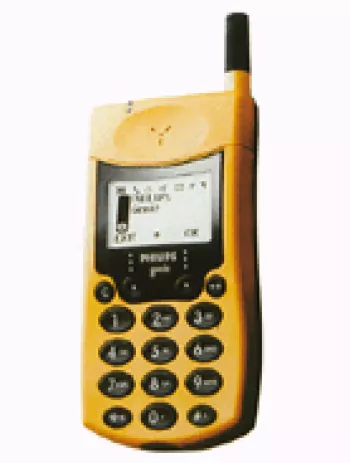
Specifications and Design
The Philips X525 was announced in the third quarter of 2011. It presents a simplistic and straightforward design ideal for users looking for essential mobile communication features without the complexities of modern smartphones. The dimensions of the phone are 160 x 51 x 14.4 mm, making it relatively compact and easy to handle with one hand. Weighing in at 108 g, it offers a lightweight experience that’s easy to carry around.
The phone supports Dual SIM (Mini-SIM, dual stand-by) capabilities. This feature was particularly appealing for users who needed to manage two phone numbers simultaneously without the hassle of carrying two separate phones.
Display
The Philips X525 boasts a 3.0-inch TFT resistive touchscreen with a resolution of 240 x 400 pixels. Although the ~155 ppi density does not rival the high-definition displays of modern smartphones, it offers satisfactory display quality for viewing standard content and navigating through the phone’s menus.
The screen supports 256K colors, providing a decent range of color representation given its positioning as a feature phone. The display’s resistive nature means that users may have to press down a little harder compared to the capacitive screens found in contemporary devices.
Camera Features
In terms of photography, the Philips X525 is equipped with a single 3.15 MP camera on the back, accompanied by an LED flash for low-light situations. The camera provides basic photographic functionality suitable for quick snaps. Video recording is also supported in QCIF resolution, sufficient for capturing basic clips.
One notable aspect is the absence of a selfie camera, which harks back to the era when forward-facing cameras were not yet standard.
Hardware and Performance
The phone has an internal storage of 44 MB, which is quite limited by today’s standards but typical for feature phones of that era. However, storage can be expanded with a microSDHC card, allowing users to store more contacts, messages, and media. Memory capacity for phonebook and call records extends to storing a significant number of entries and logs.
The specification sheet does not detail the type of processor used, a common characteristic of feature phones where emphasis is primarily placed on functionality over performance. Nonetheless, the phone is equipped to handle daily communications like SMS, MMS, and Email.
Connectivity and Communications
Connectivity options include Bluetooth 2.1 with A2DP for wireless audio, although the phone lacks WLAN capabilities. This means internet browsing was limited to mobile data networks using GPRS and EDGE technology. A miniUSB 2.0 port facilitates data transfer and charging.
The phone comes with a stereo FM radio (with RDS), offering an alternative entertainment option without consuming data. The ubiquitous 3.5mm jack is available for audio playback using wired headphones, enhancing its use as a basic multimedia device.
Battery Life
The Philips X525 houses a removable Li-Ion 1530 mAh battery, a feature appreciated by users who prefer the convenience of swapping out batteries. Battery lifespan is impressive, with up to 1080 hours of standby time and up to 14 hours of talk time, aligning well with the expectations from a feature phone.
This robust battery performance ensures the device caters well to users who require prolonged usage without frequent recharging, making it ideal for long journeys or use in environments where charging opportunities are limited.
Additional Features
A modest selection of games and Java support enriches the user experience, offering minor entertainment options. The messaging functions provide a threaded view for SMS, promoting a more organized communication layout.
The lack of integrated sensors and advanced features underscores the device's nature as a feature phone, aimed at users prioritizing essential functionalities over modern technological capabilities.
Conclusion
The Philips X525 represents a segment of mobile phones characterized by ease of use, reliability, and basic functionality. Its dual SIM capability, respectable battery life, and essential multimedia features may still appeal to users who favor simplicity and longevity over smart functionalities.
Despite being discontinued, the X525 serves as a testament to a period where mobile phones focused on bridging the gap between basic communication tools and the more sophisticated smartphones that dominate today’s market.
Key Features of Philips X525
- Dual SIM (Mini-SIM, dual stand-by)
- TFT resistive touchscreen with 256K colors
- 3.0 inches display, 240 x 400 pixels resolution
- Expandable memory via microSDHC card slot
- 3.15 MP main camera with LED flash
- 3.5mm audio jack and loudspeaker
- Bluetooth 2.1 with A2DP support
- Stereo FM radio with RDS
- MiniUSB 2.0 connectivity
- Removable Li-Ion 1530 mAh battery
- Up to 1080 hours standby time and 14 hours talk time
Disadvantages of Philips X525
- Lacks 3G and 4G connectivity, supporting only 2G GSM networks.
- Outdated resistive touchscreen technology, which can be less responsive compared to capacitive screens.
- Low screen resolution with a dense pixel per inch of only 155 ppi.
- Limited internal storage of only 44MB, which might require frequent use of microSDHC cards for additional space.
- Main camera has a basic 3.15 MP resolution, potentially producing lower quality images compared to more modern standards.
- No front-facing (selfie) camera available.
- No WLAN (Wi-Fi) capability, limiting browsing to cellular data networks.
- No GPS support for navigation or location-based services.
- Utilizes miniUSB 2.0 instead of the more modern microUSB or USB-C standards.
- Discontinued model, which may affect availability of support and repairs.


View Also
More Phones
All Rights Reserved +14266 Phones © Mobilawy 2025

























